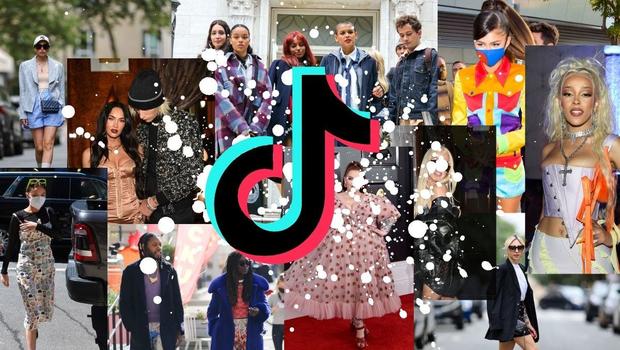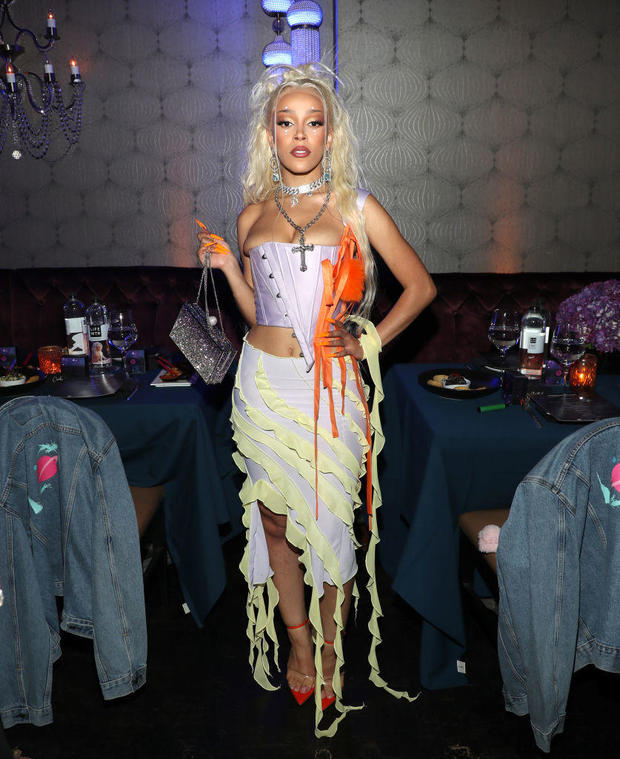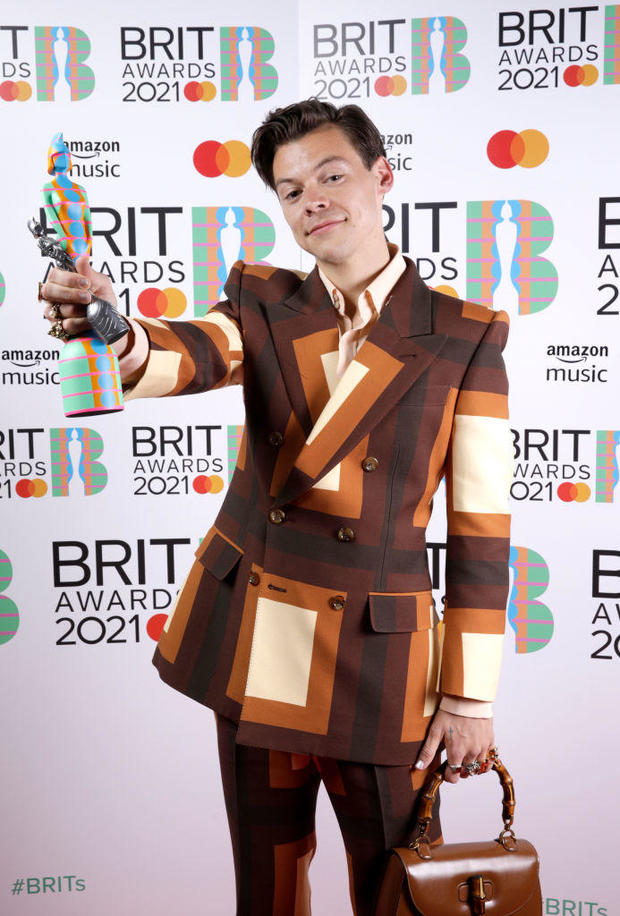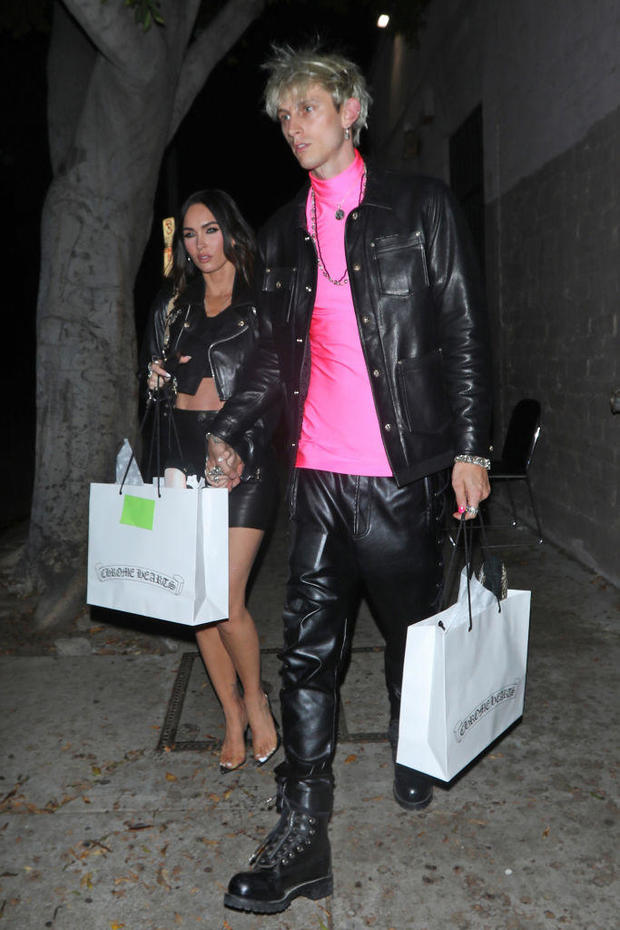TikTok is known for many things: viral dances, comedy and activism. But the social media app has also made a name for itself as a fashion incubator, where trendsetters are born and trends are revived, such as 1960s fashion and the now-popular, yet controversial low-rise jeans.
Agus Panzoni, a fashion trend researcher who runs @thealgorythm, a fashion trend TikTok, says the platform has influenced both mainstream fashion and helped bring back the popularity of subcultures — and major brands are taking note.
“The TikTok algorithm is especially good at introducing us to new things, analyzing what we resonate with, and giving us more of it,” Panzoni said. “By segmenting us based on what we like, the TikTok algorithm has resurged subcultures.”
The return of Y2K and low-rise jeans
The latest trend on “For You” pages and the streets? Fashion trends from the early 2000s. Gen Z bloggers are currently obsessed with everything the decade has to offer, like low-rise jeans, cropped pastel baby T-shirts, bustier tops and tiny baguette bags.
Men’s fashion has also seen a 2000s influence, with the boxy suit jacket look of Y2K being combined with modern silhouettes and old-school flat brim snapbacks.
TikTok users, like the teens before them, have helped popularize the Y2K aesthetic, but its rapidly shortening trend cycle means that expected styles show up in the mix much sooner and with different trends. Panzoni also says younger fashion buffs are much more likely to wear different subcultures of fashion at the same time.
- Accounts to follow: @andrae30, @samanthamoweryxx and @laurabudryte
Cottagecore: A fashion inspiration and a state of being
View this post on Instagram
A post shared by by Shelcy & Christy (@nycxclothes)
Along with the resurgence of older fashion trends, TikTok is responsible for magnifying the appeal of newer trends like cottagecore, an aesthetic that focuses on simplicity and beauty in nature.
Cottagecore is particularly easy to spot: long flowing dresses with floral print. A more androgynous version imagines soft knit jumpers and cable sweaters tucked loosely into soft pants. Most of the clothes hold little to no structure and instead work best blowing in the wind in a large open field, which is probably where cottagecore teens wish they could be.
The movement was first made popular by queer teens on TikTok, who romanticized a simple life focused on living on the land, especially during the COVID-19 pandemic.
For those in lockdown or quarantine, cottagecore styles took off for their calming aesthetic and romanticized vision that life in nature is better. Even as states begin reopening, the cottagecore vibe has been used as a way to celebrate being in nature and enjoying life outside.
- Accounts to follow: @enchanted_noir, @alltheferalfawns, @nadiiife
The 60s: Flowers everywhere
TikTok users are also bringing back 60s fashion trends, scoring videos with bubbly songs. Women’s trends include outfits with chunky white gogo books, pastel overdrawn eyeliner, big headbands, wide collars, and acidic floral patterned shirts and dresses.
For men’s fashion, the trend veers further into the psychedelic, relying on unbuttoned collared shirts, wide-leg pants, and an excess of statement jewelry. Many are inspired by pop star Harry Styles, who frequently wears clothing inspired by the 60s.
“There are many influences that have accelerated the trend cycle, internet, globalization, social media, fashion media, fast fashion companies, the introduction of the ‘drop’ as a business model,” Panzoni said. “Different from subcultures in past decades, today’s youth doesn’t feel so attached to one subculture’s aesthetic. It is not uncommon to see Gen Zers dressing cottagecore one day, new age bimbo the next and mixing or matching.”
- Accounts to follow: @aliciavellante, @groovybimbo, @stylewithmaddi
Sustainability: The activism of picking your clothes
There are some TikTok creators who encourage followers to fight back against the fashion cycle’s negative impacts on the environment. Lily Fang, who runs the @imperfectidealist TikTok account, highlights sustainable fashion brands and teaches followers realistic tips on how to make buying clothes more sustainable.
Some common ways to be a more sustainable consumer: buy from brands with environmental pledges or recycled textiles, repair your clothes instead of purchasing replacements and shop at thrift stores and consignment shops, Fang said.
She said there’s a perception that sustainable fashion means spending more money for brands with ethical business practices but this isn’t always the case. “There’s this idea that you have to buy from these expensive brands to participate in sustainable fashion, when in fact, a lot of lower-income BIPOC people have been participating in sustainable fashion this whole time — oftentimes out of necessity,” she said.
“Maybe they can’t afford the sustainable brands but they are buying less, they’re mending their clothes, they’re giving and getting hand-me-downs.”
- Accounts to follow: @imperfectidealist, @delilah_isabel, @thatcurlytopp
Emo, mall goth or pop-punk: Which revival will be next?
Panzoni predicts 2022 and beyond will see blurred lines in fashion and revivals for the pop-punk, mall goth and emo aesthetics, as seen and popularized by celebrities like Willow Smith and Machine Gun Kelly.
Many of the clothes take the baggy silhouettes and dark colors of the emo aesthetic and elevate them to high fashion, pairing dark makeup looks with tailored, bright monochromatic looks.
She hopes that fashion enthusiasts can have meaningful conversations on how to both be on-trend and move away from excess waste.
“My goal is to highlight small and second-hand businesses and eventually change the narrative away from trends towards something longer-lasting,” Panzoni said. ” If we focus on the ‘whys’ instead of the ‘whats’, we can change the way we view trends and have longer-lasting relationships with them.”
Source: Read Full Article



